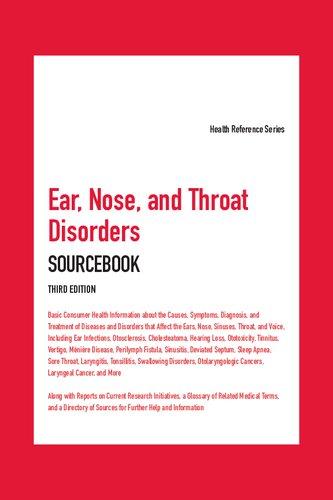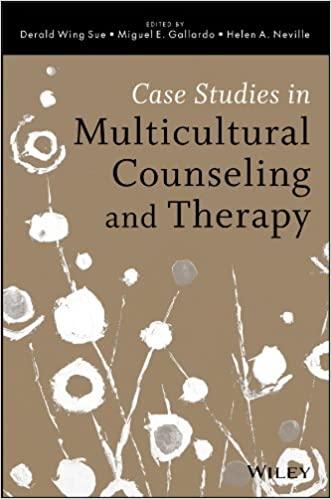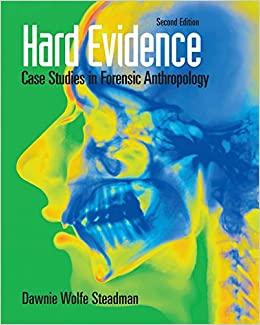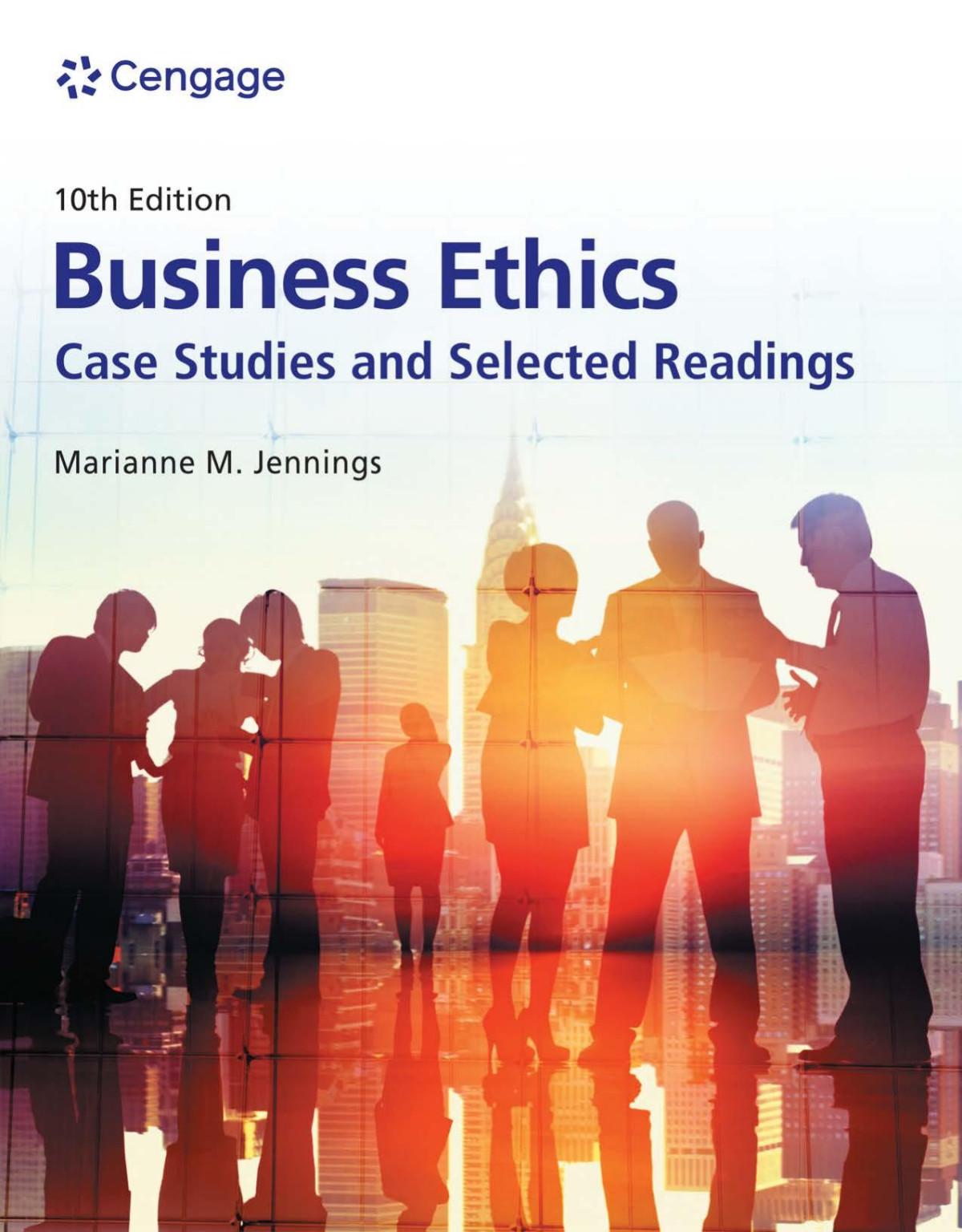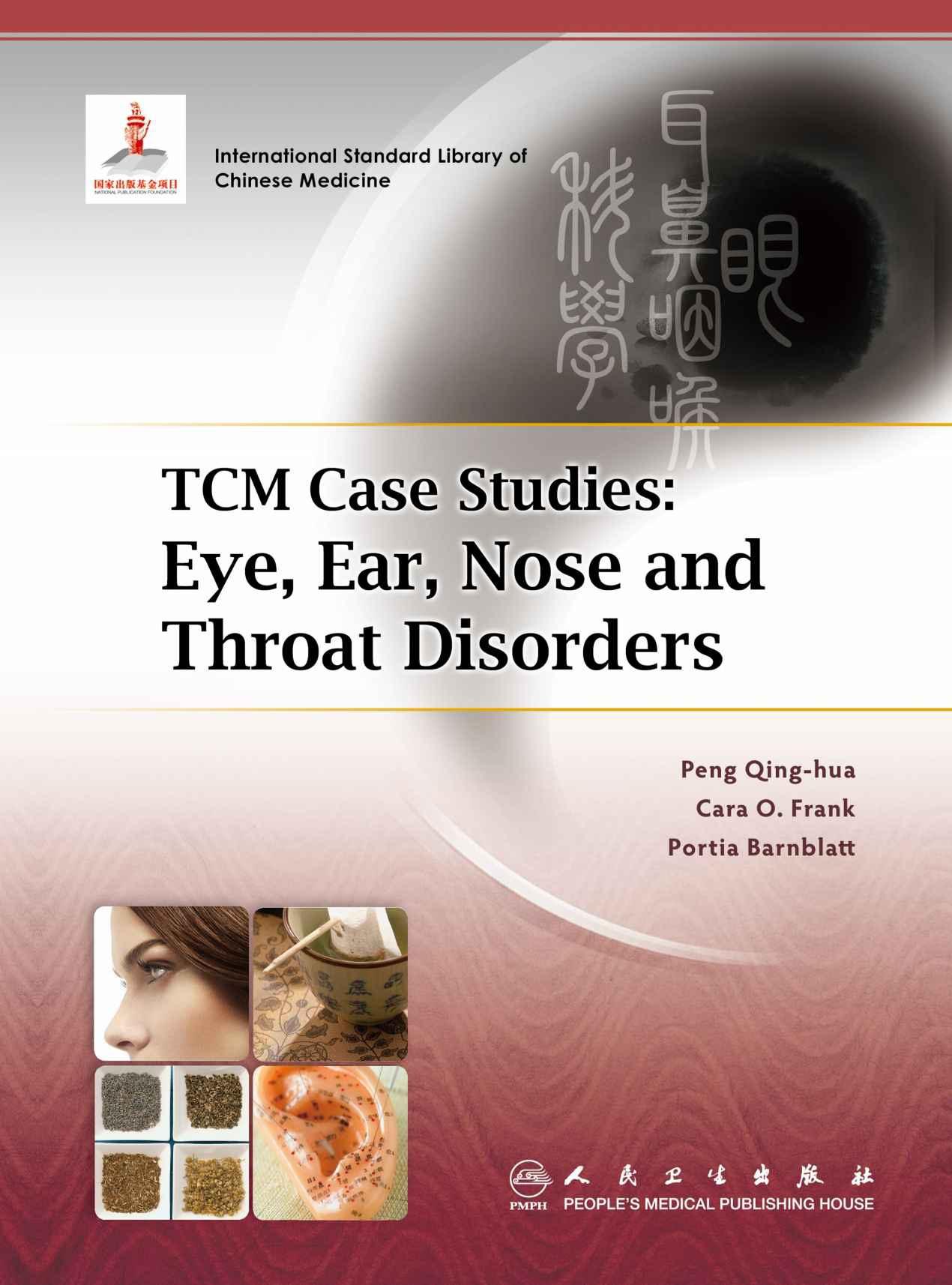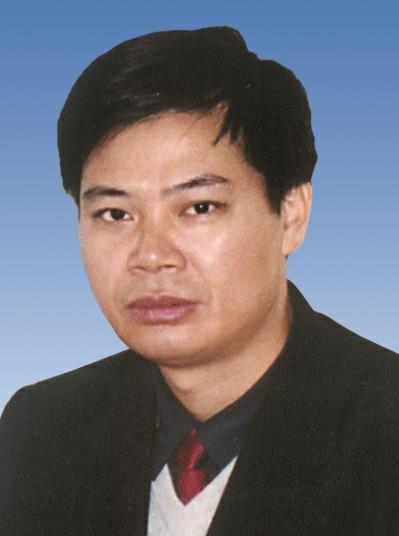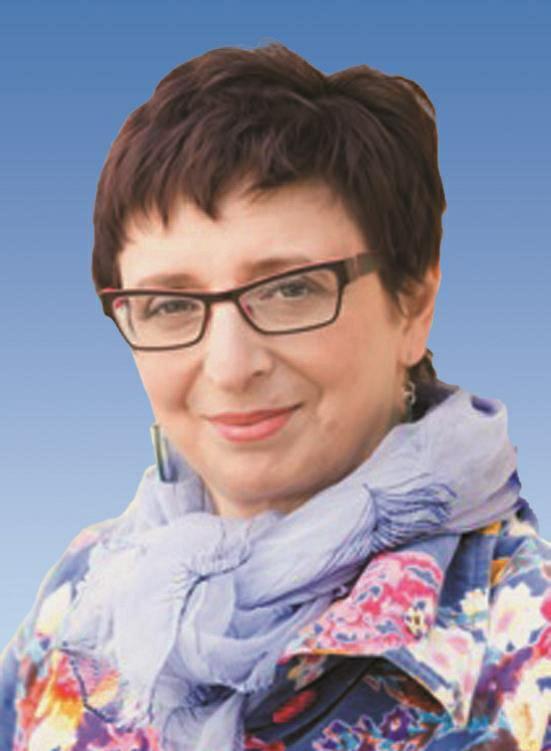TCM Case Studies: Eye, Ear, Nose and
Throat Disorders
Visit to download the full and correct content document: https://ebookmass.com/product/tcm-case-studies-eye-ear-nose-and-throat-disorders/
More products digital (pdf, epub, mobi) instant download maybe you interests ...
Ear, Nose, and Throat Disorders Sourcebook 3rd Edition
Angela Williams
https://ebookmass.com/product/ear-nose-and-throat-disorderssourcebook-3rd-edition-angela-williams/
The Massachusetts eye and ear infirmary illustrated manual of ophthalmology 5th Edition Ii Roberto Pineda
https://ebookmass.com/product/the-massachusetts-eye-and-earinfirmary-illustrated-manual-of-ophthalmology-5th-edition-iiroberto-pineda/
The Massachusetts Eye and Ear Infirmary Illustrated Manual of Ophthalmology 5th Edition Neil J. Friedman
https://ebookmass.com/product/the-massachusetts-eye-and-earinfirmary-illustrated-manual-of-ophthalmology-5th-edition-neil-jfriedman/
Case Studies in Multicultural Counseling and Therapy
https://ebookmass.com/product/case-studies-in-multiculturalcounseling-and-therapy/
Hard Evidence: Case Studies in Forensic Anthropology
https://ebookmass.com/product/hard-evidence-case-studies-inforensic-anthropology/
Program Evaluation: Methods and Case Studies 9th Edition, (Ebook PDF)
https://ebookmass.com/product/program-evaluation-methods-andcase-studies-9th-edition-ebook-pdf/
Business Ethics: Case Studies and Selected Readings
Marianne M. Jennings
https://ebookmass.com/product/business-ethics-case-studies-andselected-readings-marianne-m-jennings/
Risks, Identity and Conflict: Theoretical Perspectives and Case Studies
Steven Ratuva
https://ebookmass.com/product/risks-identity-and-conflicttheoretical-perspectives-and-case-studies-steven-ratuva/
Case Studies in Psychotherapy 7th Edition, (Ebook PDF)
https://ebookmass.com/product/case-studies-in-psychotherapy-7thedition-ebook-pdf/
Authors
TCM Case Studies:Eye, Ear, Nose and Throat Disorders
Peng Qing-hua, Ph.D. TCM
Professor, Chief physician, and Doctoral Supervisor of TCM
Ophthalmology; Director of the National TCM Center for Fundus Diseases; Academic leader of the TCM Ophthalmology of the State Administration of TCM and Fundus Diseases; Director of the TCM Diagnosis Research Institute, and Vice-President of Hunan University of Chinese Medicine, Changsha, China
Cara O. Frank, L.OM. Dipl. OM.
Adjunct Faculty, Creator, Co-developer and Former Director of Education, Department of Chinese Herbology, Won Institute of Graduate Studies, Glenside, PA, USA; President, China Herb Company; President, Six Fishes Healing Arts and Six Fishes Neighborhood Acupuncture, Philadelphia, PA, USA
Portia Barnblatt, DAOM, L.Ac. Dipl.Ac.
Portia Chan Acupuncture Clinic, San Francisco, U.S.A.; Clinical
Supervisor for American College of Traditional Chinese Medicine, San Francisco, CA, USA
Associate Editors
Liu Da-xin
Professor, Chief physician, and Doctoral Supervisor; Director of the Otolaryngology Department, and Director of the Teaching and Research
Department of Otolaryngology, Dongfang Hospital Affiliated to Beijing
University of Chinese Medicine, Beijing, China
Li Zhi-ying, M.S. TCM
Professor, Chief Physician and Doctoral Supervisor of TCM
Ophthalmology Department, the First Affiliated Hospital of Guangzhou
University of Chinese Medicine, Guangzhou, China
Li Fan-cheng, M.S. Integrated Chinese and Western Medicine
Professor, Chief physician, and Doctoral Supervisor, Otolaryngology
Department of Hunan University of Chinese Medicine, Changsha China
Contributors (listed alphabetically by last name)
Ding Shu-hua
Professor, Chief Physician and Doctoral Supervisor of TCM
Ophthalmology, Affiliated Hospital of Nanjing University of Chinese
Medicine; Director of the Teaching and Research Department of Ophthalmology, Nanjing University of Chinese Medicine, Nanjing, China
Hong Liang, M.S. TCM
Professor, Chief Physician and Postgraduate Supervisor of TCM
Ophthalmology; Director of the Ophthalmology Department, and Director of the Teaching and Research Department of Ophthalmology, Affiliated Hospital of Jiangxi University of TCM, Nanchang, China
Li Dian
Professor, Chief Physician and Postgraduate Supervisor of TCM
Ophthalmology; Director of Science and Education Department, the First Affiliated Hospital of Hunan University of Chinese Medicine, Changsha, China
Li Jian-chao
Associate Chief Physician, Department of Ophthalmology, Chenzhou
First People’s Hospital, Chenzhou, China
Peng Bin, Ph.D. TCM
Professor, Chief Physician and Postgraduate Supervisor; Director of the Otolaryngology Department, the Second Affiliated Hospital of Hunan University of Chinese Medicine, Changsha, China
Peng Bo, M.S. TCM
Attending Physician of the Ophthalmology and Otorhinolaryngology Department, Affiliated Hospital of Hunan Academy of Chinese Medicine, Changsha, China
Peng Jun
Resident Physician, Hunan University of Chinese Medicine, Changsha, China
Shen Qi, Ph.D. TCM
Associate Professor and Associate Chief Physician of the Otolaryngology Department, the Second Affiliated Hospital of Hunan University of Chinese Medicine, Changsha, China
Tan Han-yu, Ph.D. TCM
Lecturer, Department of Ophthalmology of Integrative Medicine, Hunan University of Chinese Medicine, Changsha, China
Wang Xian-wen, Ph.D. TCM
Associate Professor and Associate Chief Physician of the Otolaryngology Department, the First Affiliated Hospital of Hunan University of Chinese Medicine, Changsha, China
Xiao Jia-xiang, M.S. TCM
Professor, Chief Physician and Postgraduate Supervisor of TCM
Ophthalmology; Director of the Ophthalmology Department, and Director the Teaching and Research Department of Ophthalmology, Guiyang College of TCM, Guizhou, China
Xie Xue-jun, Ph.D. TCM
Renowned TCM Doctor of Sichuan Province; Professor, Chief Physician and Doctoral Supervisor, Department of the TCM Ophthalmology, Affiliated Hospital of Chengdu University of TCM, Chengdu, China
Xin Yao-jie
Professor, Chief Physician and Postgraduate Supervisor; Director of Teaching and Research Department of TCM Otolaryngology, Shuguang Hospital Affiliated to Shanghai University of TCM, Shanghai, China.
Xu Jian
Chief Physician, Department of Ophthalmology, Ningbo First Hospital, Ningbo, China
Yao Xiao-lei, Ph.D. TCM
Associate Professor and Associate Chief Physician of TCM
Ophthalmology; Deputy Director, Department of Ophthalmology, the Second Affiliated Hospital of Guangxi University of Chinese Medicine, Nanning, China
Zhu Hui-an, Ph.D. TCM
Vice President of the Affiliated People’s Hospital of Hunan University of Chinese Medicine; Professor, Chief Physician and Postgraduate Supervisor, Department of the Ophthalmology, the First Affiliated Hospital of Hunan University of Chinese Medicine, Changsha, China
Zheng Sha-meng
Professor and Postgraduate Supervisor of TCM Otolaryngology, Zhejiang Chinese Medical University; Chief Physician, Department of Otolaryngology, Zhejiang Provincial Hospital of TCM, Hangzhou, China
About the Authors
华教授
Peng Qing-hua is the professor, chief physician, and doctoral supervisor and Vice-President of Hunan University of Chinese Medicine. He is the director of its TCM Diagnosis Research Institute as well as the director of the National TCM Center for Fundus Diseases and the Ophthalmic Scientific Research Laboratory. He serves as the pacesetter of the key discipline and the key specialty of the State Administration of TCM in the 10th and 11th FiveYear Plan period. Dr. Peng is also the academic leader of national key discipline and Hunan provincial key discipline as well as a member of the Academic Degrees Committee and Academic Committee of Hunan University of Chinese Medicine.
During his distinguished career he has been the recipient of many prizes, including the National Award for Young Teachers in Universities by the Ministry of Education; The Award for Young Scientists in Hunan Province; The Young and Middle-aged Expert with Outstanding Contribution by the
Ministry of Health; The National 100 Outstanding Young TCM Doctors, The Integrative Chinese and Western Medicine Contribution Award; The Science and Technology Star of China Association of Chinese Medicine (CACM). He has been awarded the Government Special Allowance by State Council since 2002, and top candidate for 121 talents of Hunan province as well as the New Century Talents Project. Based on his contributions, he was appointed to the positions of vice-director of Ophthalmology Specialty Committee of the World Federation of Chinese Medicine Societies (WFCMS); vice-chairman of the Society of Ophthalmology of CACM; vice-chairman of the Ophthalmology Specialty Committee of Chinese Association of Integrative Medicine (CAIM); deputy secretary general of the Registration Committee of Overseas TCM Practitioners of WFCMS; executive director of the Hunan Association of Chinese Medicine and chairman of the Hunan Integrated Traditional Chinese and Biomedical Ophthalmology Committee. He has acted as a specialist for the National Natural Science Foundation of China and he has been a consulting specialist for the international cooperation project supported by the Ministry of Science and Technology of China, the programs of national 973 programs in biological medicine field, and the national Chinese medicinal New Drug. He has been the chief examiner of national Traditional Chinese Medical Licensing Examination in Hunan province; and member of WHO project of International Classification of Diseases in Traditional Medicine.
Prof. Peng Qing-hua has been in charge of 38 scientific research projects at the national, ministerial, and provincial levels. His work has been awarded second prize 6 times and third prize, 7 times. Two of his papers have been awarded academic excellence at the ministerial and provincial levels. The awarding institutions include the Scientific and Technological Advancement by the Ministry of Education, the Science and Technology Award by CAIM,
the Science and Technology Award by CACM, the Scientific and Technological Advancement by Hunan province, the Scientific and Technological Advancement by SATCM. Other awards and prizes include 15 items of scientific, technological and educational achievement awards at provincial and departmental levels.
He is also the editor-in-chief of 12 textbooks and monographs, including TCM Ophthalmology, Integrated Chinese and Western Medical Ophthalmology, and Medicine for Fundus Diseases. He has been the associate editor of 9 textbooks and monographs including TCM Ophthalmology and Integrated Traditional Chinese and Biomedical Ophthalmology, and Clinic Research of TCM Ophthalmology. He is a member of the editorial board of 16 books. He has published more than 400 pieces of papers in professional journals like International Journal of Ophthalmology and Chinese Journal of Ophthalmology as well as in international and domestic academic conferences like World Ophthalmology Congress and Asia-pacific Academy of Ophthalmology Congress.
He has mentored 19 doctoral and 65 master students, 6 of whom have graduated with Excellent Doctoral or Master Dissertation Reward accredited by the Hunan Provincial Government.
Prof. Peng Qing-hua has been an associate-editor of Journal of Chinese Ophthalmology and Otorhinolaryngology, a standing member of editorial board of International Journal of Ophthalmology and Chinese Journal of Modern Eye, Ear, Nose, and Throat. He is a member of editorial board and invited reviewer of more than 10 core journal including the China Journal of Traditional Chinese Medicine and Pharmacy, The Journal of Traditional Chinese Medicine, The Journal of Chinese Integrative Medicine, The Journal of Traditional Chinese Ophthalmology, The Journal of Traditional Chinese
Medicine University of Hunan, and The Hunan Journal of Traditional Chinese Medicine. He has devoted himself to the research of preventing and treating fundus diseases, glaucoma, and ocular surface diseases with integrated traditional Chinese and western medicine.
Cara O. Frank
Cara Frank has been a practitioner and teacher of Acupuncture and Chinese herbology since 1993. She is a popular lecturer, known especially for her clear and humorous teaching style. Ms. Frank has demystified Chinese Herbology for acupuncturists, doctors, nurses, veterinarians, botanists and researchers.
Ms. Frank’s initial training was at the New England School of Acupuncture where she is a 1983 graduate. She is a 1988 graduate of Empire State College, where she received a Bachelors of Professional Studies in Chinese Medical Studies. Her post-graduate herbal training was with Ted Kaptchuk, OMD, Simon Mills and at the Xi Yuan Hospital in Beijing, China. It was in China, that her passion with Chinese herbal medicine took root. Recently, Ms. Frank has studied Classical Formulas with Dr Huang Huang of Nanjing. Ms. Frank was one of the item writers for the first Chinese Herbal Certificate Examination offered by the National Commission for the Certification of Acupuncture & Oriental Medicine (NCCAOM).
In 1991, she founded China Herb Company, which was the first mail
order compounding Chinese herbal dispensary in the United States. Ms. Frank has developed a line of her own herbal formulas, including formulas for cancer support, respiratory and pediatric.
Ms. Frank is the founder of Six Fishes Chinese Medicine, an acupuncture and herb practice with two locations in Philadelphia. She leads a team of TCM practitioners who specialize in herbology, EENT disorders, pediatrics and internal medicine.
Ms. Frank has been an instructor of Chinese Herbology since 1996. She was the director of the department of Chinese herbology at the Tai Sophia Institute from 2003 to 2011. Currently, Ms. Frank is the Director of the Department of Chinese Herbology at the Won Institute of Graduate Studies in Glenside, PA. Ms. Frank created the entire department, designed an innovative curriculum and is the primary instructor of the program. Using classical texts along with the modern teaching methodology and the latest technology, she developed a website for the class that included photographs, podcasts, handouts, class blogs to enhance the students learning experience.
Ms. Frank lives with her husband, children and puppy in Center City, Philadelphia. She was an accomplished chef in her former career, and an avid gardener. When she isn’t busy with a full acupuncture and Chinese Medicine practice or teaching, she can usually be found tending to her award-winning garden or in her kitchen cooking something delicious.
Ms. Frank is the English language editor of this book and the author of its commentary.

Portia Barnblatt, Doctor of Acupuncture and Chinese Medicine in United States. Dr. Barnblatt holds a Doctoral Degree in Acupuncture and Oriental Medicine and has been practicing Chinese Medicine since 1997. She has a private office in San Francisco. Besides working at her private office, Dr. Barnblatt is also a Chief Acupuncture Doctor at Chinese Hospital in San Francisco as well as a Clinical Supervisor at the American College of Traditional Chinese Medicine in San Francisco. In 2004, Dr. Barnblatt served as a Research Acupuncturist for the post-open heart surgery patient at the Pacific Medical Center in UCSF. In 2007, Dr. Barnblatt received an Award from San Francisco Mayor’s Office for her excellent work in the Chinese Medicine field and her service to the community. She is a member of Acupuncturist Without Border. In 2011, Dr. Barnblatt helped Shanghai TCM University to develop its First Bi-Lingual teaching program in Acupuncture and Tui Na Department. Dr. Barnblatt just finished her work as a Chief English Editor and Translator for the “TCM Fundamental Theory” textbook by Shanghai TCM University. Dr. Barnblatt has a great passion for the work she does and goes to China every year to further her knowledge in the Chinese Medicine Field.
Portia Barnblatt
Editorial Board for the TCM Case Studies in the International Standard Library of Chinese Medicine
Executive Directors
Li Zhen-ji (李振吉)
Vice Chairman and Secretary-General, World Federation of Chinese Medical Societies, Beijing, China
Hu Guo-chen (胡国臣)
President and Editor-in-Chief, People’s Medical Publishing House, Beijing, China
Directors
Liang Fan-rong (梁繁荣)
Professor and Doctoral Supervisor of Acupuncture and Moxibustion, and President of Chengdu University of TCM, Chengdu, China
He Qing-hu (何清湖)
Professor and Doctoral Supervisor of Chinese External Medicine, and Vice President of Hunan University of Chinese Medicine, Changsha, China
General Coordinators
Liu Shui (刘水)
Vice-Director of International Publication Center, People’s Medical Publishing House, Beijing
Wang Han-bing (王寒冰)
Former Vice-director of International Cooperation and Exchange Department, Chengdu University of TCM, Chengdu, China
Harry F. Lardner, Dipl.Ac.
Editor and Projector Manager of International Publication Center, People’s Medical Publishing House, Beijing
Members
Al Stone, L.Ac., DAOM
Founder of the Web-sites acupuncture.com, gancao.net and eagleherbs.com, Instructor and Clinic Supervisor at Emperor’s College of Traditional Oriental Medicine, Santa Monica, CA, USA
Cai Guang-xian (蔡光先), M.S. TCM
Chief Physician, Professor, Doctoral Supervisor and Academic Leader of TCM Internal Medicine, Hunan University of Chinese Medicine; Director of Key Laboratory of TCM Internal Medicine Sponsored by Provincial Government and Ministry of Education, Changsha, China
Cara O. Frank, L.OM. Dipl. OM.
Educational Director of the Department of Chinese Herbology, Won Institute of Graduate Studies, Glenside, PA, USA
Chen Yun-hui (陈云慧), Ph.D. TCM
Lecturer of Chinese Materia Medica, School of International Education, Chengdu University of TCM, Chengdu, China
He Qing-hu (何清湖), Ph.D. TCM
Professor and Doctoral Supervisor of Chinese External Medicine, and Vice President of Hunan University of Chinese Medicine, Changsha, China
Hu You-ping (胡幼平)
Professor and Doctoral Supervisor, Acupuncture and Tuina College/The Third Affiliated Hospital, Chengdu University of TCM, Chengdu, China
Huang Ying (黄莺)
Chief Physician, Professor and Vice-Director of the Department of Dermatology, Teaching Hospital of Chengdu University of TCM, Chengdu, China
Jake Paul Fratkin, OMD, L.Ac.
Continuing Education Faculty, American College of Traditional Chinese Medicine, San Francisco; Continuing Education Faculty, Oregon College of Oriental Medicine, Portland; Continuing Education Faculty, Austin College of Oriental Medicine, Austin, Texas, USA
James Flowers
PhD Candidate, College of Oriental Medicine, Wonkwang University, South Korea; Secretary General, International Association for the Study of Traditional Asian Medicine
Lei Lei (雷磊), Ph.D. TCM
Chief Physician, Professor & Doctoral Supervisor of TCM Gynecology; Academic Leader of TCM Gynecology, National Key Discipline of the State
Administration of Traditional Chinese Medicine, Hunan University of Chinese Medicine, Changsha, China
Lei Yu-e (雷玉娥)
Associate Professor, Hunan University of Chinese Medicine, Changsha, China
Liu Bai-yan (刘柏炎), Ph.D. Integrative Medicine
Professor and Doctoral Supervisor of TCM Internal Medicine, Hunan University of Chinese Medicine; Director of Hunan Provincial Key University Laboratory of TCM Internal Medicine, Changsha, China
Ma Xi-tao (马喜桃)
Resident Physician, Teaching Hospital of Chengdu University of TCM, Chengdu, China
Misha R. Cohen, OMD, L.Ac.
Clinic Director, Chicken Soup Chinese Medicine; Research Specialist in Integrative Medicine, UCSF Institute for Health and Aging; Associate Member, UCSF Comprehensive Cancer Center; Director, MRCE Foundation
Pär Rufus Scott, MOAM, Lic. Ac.
Peng Qing-hua (彭清华), Ph.D. TCM
Professor, Chief physician, and Doctoral Supervisor of TCM Ophthalmology; Director of the National TCM Center for Fundus Diseases; Academic leader of the TCM Ophthalmology of the State Administration of TCM and Fundus Diseases; Director of the TCM Diagnosis Research Institute, and Vice-President of Hunan University of CM, Changsha, China
Portia Barnblatt, DAOM, L.Ac. Dipl.Ac. Portia Chan Acupuncture
Clinic, San Francisco, U.S.A.; Clinical supervisor for American College of Traditional Chinese Medicine, San Francisco, U.S.A
Suzanne Robidoux, Ph.D, DOM, L.Ac.
Post Doctor Laureates of Beijing University of Chinese Medicine, Specialized in Classical Medicine and Neurology, Beijing, China
Wan Peng (万鹏), M.S. TCM
Lecturer and Attending Physician of Chinese External Medicine, School of Clinical Medicine/Teaching Hospital of Chengdu University of TCM, Chengdu, China
Wang Jing (王静), Ph.D. TCM
Lecturer of TCM Gynecology, Chengdu University of TCM, Chengdu, China
Wang Meng-qing (王孟清), Ph.D. TCM
Professor and Chief physician of TCM Pediatrics, the First Hospital Affiliated to Hunan University of Chinese Medicine; Director of TCM Pediatrics Department and TCM Pediatrics Teaching Office, Hunan University of Chinese Medicine, Changsha, China
William R. Morris, PhD, DAOM, L.Ac.
President, AOMA Graduate School of Integrative Medicine, Austin, Texas, USA
Wu Jun-mei (吴俊梅), Ph.D. of
Acupuncture and Moxibustion
Professor and Master Supervisor, Acupuncture and Tuina College/The Third Affiliated Hospital, Chengdu University of TCM, Chengdu, China
Wu Qian-zhi (吴潜智), M.S. TCM
Vice President of Faculty, Professor and Licensed Acupuncturist, AOMA Graduate School of Integrative Medicine, Austin, Texas, USA
Ye Xiao (叶晓), M.S. TCM
Lecturer, Foreign Languages College, Zhejiang Chinese Medical University, Hangzhou, China
Zeng Chun (曾纯), M.S. TCM
Editor and Projector Manager of International Publication Center, People’s Medical Publishing House, Beijing, China
Zeng Sheng-ping (曾升平), M.S. TCM
Chief Physician and Professor of TCM Rheumatology and Immunology, Chengdu University of TCM, Chengdu, China
Zhang Yan-hong (张艳红)
Associate Professor, English Teaching and Research Office, Hunan University of Chinese Medicine, Changsha, China
Zheng Qi (郑琦)
Freelance Translator/Interpreter, Beijing, China
Sponsored by
World Federation of Chinese Medical Societies
Preface
Case-based teaching is a pedagogical teaching method that uses real case histories as active teaching tools for students to learn the definitions or theory of a topic. This method helps students to develop sophisticated diagnostic skills using intense theme-centered interactions with their supervisors through inquiry, dialogue, and seeking answers. It is an openended, student-oriented teaching approach that maximizes their learning potential by helping them achieve better critical thinking and real-world problem solving skills. Traditional Chinese Medicine (TCM) is a practical modality and its education system must be responsive to the demands of society and the health care market. Innovative teaching methods are needed to improve the clinical competency of TCM students. By coupling didactic instruction with case histories, students are able to apply their theoretical knowledge of TCM principles, methods, formulas, and medicinals in real world clinical practice settings, thus providing patients with effective treatment based on pattern differentiation.
Case-based teaching is a pragmatic method that needs to be integrated into the pedagogy of TCM clinical courses. This method helps to cultivate analytical thinking and the clinical abilities of students. It represents the future direction of clinical education. TCM Case Studies: Eye, Ear, Nose and Throat Disorders is one volume of the series TCM Case Studies.
This textbook uses real-life cases of TCM Ophthalmology and
Otolaryngology and provides detailed analysis throughout the whole process of diagnosis and treatment using TCM pattern differentiation, analytical thinking of prescribing formulas and Chinese medicinals, the progression of the disease, and the patient’s therapeutic responses. It builds bridges between theoretical study and clinical practice, cultivating critical thinking skills of students to diagnose and treat ophthalmic and otolaryngological disorders.
By prioritizing disorders that are widely seen and treated with TCM, this book elaborates on each case of 32 common ophthalmic diseases and 29 common otolaryngological diseases in terms of nine key aspects.
The brief introduction provides an Outline of The Disorder including basic concepts, etiology, pathomechanisms, and classification of pattern differentiation. The Case Summary provides the general background information of the patient, the chief complaint for his/her initial visit, their medical history and symptoms, the current clinical manifestations, as well as findings from the physical examination, special examination, and laboratory examination. Common Clinical Patterns and Formulas outlines the most common patterns that a clinician will encounter in clinical practice with recommended formulas.
The Diagnostic Analysis explains the major features of the case including the cause of disease, signs and symptoms, tongue appearance and pulse qualities. It also explains the progression of the disease, the therapeutic response as well as an assessment of what needs to be improved in the patient’s medical history, along with the physical examination, and inspection. This section also provides guidelines for the analysis of special symptoms and signs, tongue appearance, and pulse condition as well as the patterns and diagnosis that should be considered in accordance with the condition of disease. This then leads to the selection of therapeutic treatment
methods and corresponding formulas and medicinals based on pattern differentiation. The Diagnostic Analysis focuses on data collected by the four examinations, analyzes the etiology and pathomechanisms of the case and interprets its manifestations, tongue appearance, and pulse condition to determine the location and nature of disease, ascertain the pattern, and distinguish it from similar patterns.
This process culminates with The Diagnosis, which lists the Chinese medical name for the disease and its pattern type, as well as the Western medical name. Clinical Treatment contains therapeutic principles, specific treatment methods, formula and medicinals and modifications. Also discussed are alternative formulas, analysis of the formula and medicinals, acupuncture point prescription acupuncture and its analysis, and other therapies with TCM modalities.
The Further Consultation summarizes the patient’s progress on the second visit and the corresponding treatment. Study Questions explores questions that are not explicitly discussed in the case analysis and are designed to inspire critical thinking for students. These are offered in as essay questions and as Case Scenarios. Finally, Answers reference answer or key points to the Study Questions are discussed.
The editorial committee of this textbook consists of experts and professors of TCM Ophthalmology and Otolaryngology from TCM University and College of Hunan Beijing, Guangzhou, Shanghai, Chengdu, Nanjing, Jiangxi, Guiyang, Zhejiang, and Guangxi. All of them have longterm clinical experience and most of them are veteran professors who lecture on TCM to undergraduates and international students. During their distinguished careers, they have not only accumulated rich clinical experiences and profound understanding of TCM clinical education for
international students, but they also have published textbooks and reference books on TCM Ophthalmology and Otolaryngology. The combined experience of these esteemed practitioners has laid a solid foundation for writing this book.
This book is designed primarily for overseas readers. It aims to provide real life case studies and references for teachers and students of international TCM, acupuncture colleges, acupuncturists, and biomedical doctors who are interested in TCM and acupuncture. It is also geared to the general reader to familiarize them with the advantages of treating ophthalmic and otolaryngological disorders with TCM.
This book is practical and is highly readability. It took more than two years to complete. During the writing process, there were many group discussions where the book was reviewed and revised. However, despite the authors’ best efforts, this book is still a work on progress. We invite the readers to send their comments, corrections, and suggestions to supplement, amend, and improve when reprinted.
Prof. Peng Qing-hua
Hunan University of Chinese Medicine October 18, 2013
Table of Contents
Part I Diseases of the Eyes
Chapter 1 Hordeolum
Chapter 2 Chalazion
Chapter 3 Ptosis
Chapter 4 Epiphora
Chapter 5 Acute Dacryocystitis
Chapter 6 Bacterial Conjunctivitis
Chapter 7 Epidemic Hemorrhagic Conjunctivitis
Chapter 8 Vernal Keratoconjunctivitis
Chapter 9 Phlyctenular Keratoconjunctivitis
Chapter 10 Chronic Conjunctivitis
Chapter 11 Pterygium
Chapter 12 Subconjunctival Hemorrhage
Chapter 13 Scleritis
Chapter 14 Herpes Simplex Keratitis
Chapter 15 Ulcerative Keratitis
Chapter 16 Purulent Keratitis
Chapter 17 Interstitial Keratitis
Chapter 18 Iridocyclitis
Chapter 19 Acute Angle-Closure Glaucoma
Chapter 20 Chronic Open-Angle Glaucoma
Chapter 21 Cataract
Chapter 22 Vitreous Opacity
Chapter 23 Central Retinal Artery Occlusion
Chapter 24 Retinal Vein Occlusion
Chapter 25 Diabetic Retinopathy
Chapter 26 Central Serous Chorioretinopathy
Chapter 27 Retinitis Pigmentosa
Chapter 28 Optic Nerve Atrophy
Chapter 29 Paralytic Strabismus
Chapter 30 Ocular Contusion
Chapter 31 Perforated Wound of the Eyeball
Chapter 32 Myopia
Part II Diseases of the Ear, Nose and Throat
Chapter 33 Pseudocyst of the Auricle
Chapter 34 Eczema of the External Ear
Chapter 35 Non-suppurative Otitis Media
Chapter 36 Acute Suppurative Otitis Media
Chapter 37 Chronic Suppurative Otitis Media
Chapter 38 Sudden Hearing Loss
Chapter 39 Sensorineural Hearing Loss
Chapter 40 Drug-Induced Hearing Loss
Chapter 41 Noise-Induced Hearing Loss
Chapter 42 Presbycusis
Chapter 43 Ménière’s Disease
Chapter 44 Bell’s Palsy
Chapter 45 Nasal Furuncle
Chapter 46 Nasal Vestibulitis
Chapter 47 Chronic Rhinitis
Chapter 48 Nasal Dryness
Chapter 49 Atrophic Rhinitis
Chapter 50 Allergic Rhinitis
Chapter 51 Acute Nasosinusitis
Chapter 52 Chronic Nasosinusitis
Chapter 53 Epistaxis
Chapter 54 Snoring
Chapter 55 Chronic Pharyngitis
Chapter 56 Acute Tonsillitis
Chapter 57 Peritonsillar Abscess
Chapter 58 Acute Laryngitis
Chapter 59 Chronic Laryngitis
Chapter 60 Plum Pit Qi
Chapter 61 Nasopharyngeal Carcinoma
Appendix I:Pinyin-English Formula Cross Reference
Appendix II:List of Cited Sources
Index

